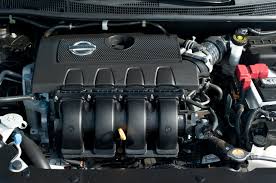
One of the first things most of us look for in a pre-owned car is the number of miles on the clock. While miles matter, there are a few other important areas you can’t afford to miss.
Let’s be honest – what you’re really looking for in this post is numbers. What number should you never, ever go above when you’re looking at used cars? What number is enough for a car to keep running until you get your dream job with the paycheck allowing you to purchase your dream car?
We have good and bad news. The good news is that we do have some statistics that will be useful. The bad news is that they’re only part of the equation. The number of miles on the clock should certainly be taken into consideration, but there are a few other questions you need to ask.
OK, let’s talk numbers. What you need to look at is how the car has been treated at the important milestones of its service history. A car that’s got 29,000 miles on the clock but has never had any attention from a mechanic, could be in significantly worse condition than a car with 73,000 miles that has been serviced every year. If the service record indicates that the car has been treated like another member of the family, the chances are that what’s under the hood is in as good condition as the exterior.

Service Milestones
A pre-owned car in great condition will have been professionally checked:
- At 5,000 miles
- At 10,000 miles
- At 15,000 miles
- At 30,000 miles
- At 45,000 miles
- At 60,000 miles
- At 100,000 miles
If the car is nearing one of these service milestones, beware – you could be hit with a big bill if you decide to become the new owner and take it to a mechanic. But, if it has just received a clean bill of health, then you might have found your next vehicle!
You’ll see that at 100,000 miles, the figures stop. Does this mean a car with a higher mileage count should be avoided? Not at all. If there are more than 100,000 miles and the car has rarely been serviced, then you should think very carefully before parting with your hard-earned cash. On the other hand, if it has been serviced at each of these milestones, and has more than 100,000 miles on the clock, then it could be a good buy and you’ll need to consider some other aspects of the car’s history.
Miles Matter, But That’s Not All
Not all miles are created equal. Engines wear more when the car starts up and is driven from cold. So, a car that has been driven in the congested streets of a city has driven a short distance, braked, then driven another short distance. Every. Single. Day. But, a car that’s been driven in a more rural location has been taken for long drives, with far fewer stoppages. It’s most likely got more miles on the clock, but there has been significantly less wear-and-tear on the engine and brakes.
What about a car that’s quite old, but with very few miles? This might be surprising, but very few miles aren’t actually a good thing. In fact, it should ring alarm bells. It’s likely this vehicle has been driven for very short drives, to the point where the engine and brakes are probably in relatively poor condition. Or, the car might have been sitting unused for a long period of time – another state which doesn’t make for a healthy vehicle.
But, if the car has been serviced at the milestones above, the parts could be fine. That’s when it really pays to bring along a mechanic to the test drive so you can be certain you’re not about to purchase a dud.
If you would like to contact me, send me an email at sharon.wilson@massygroup.com.
